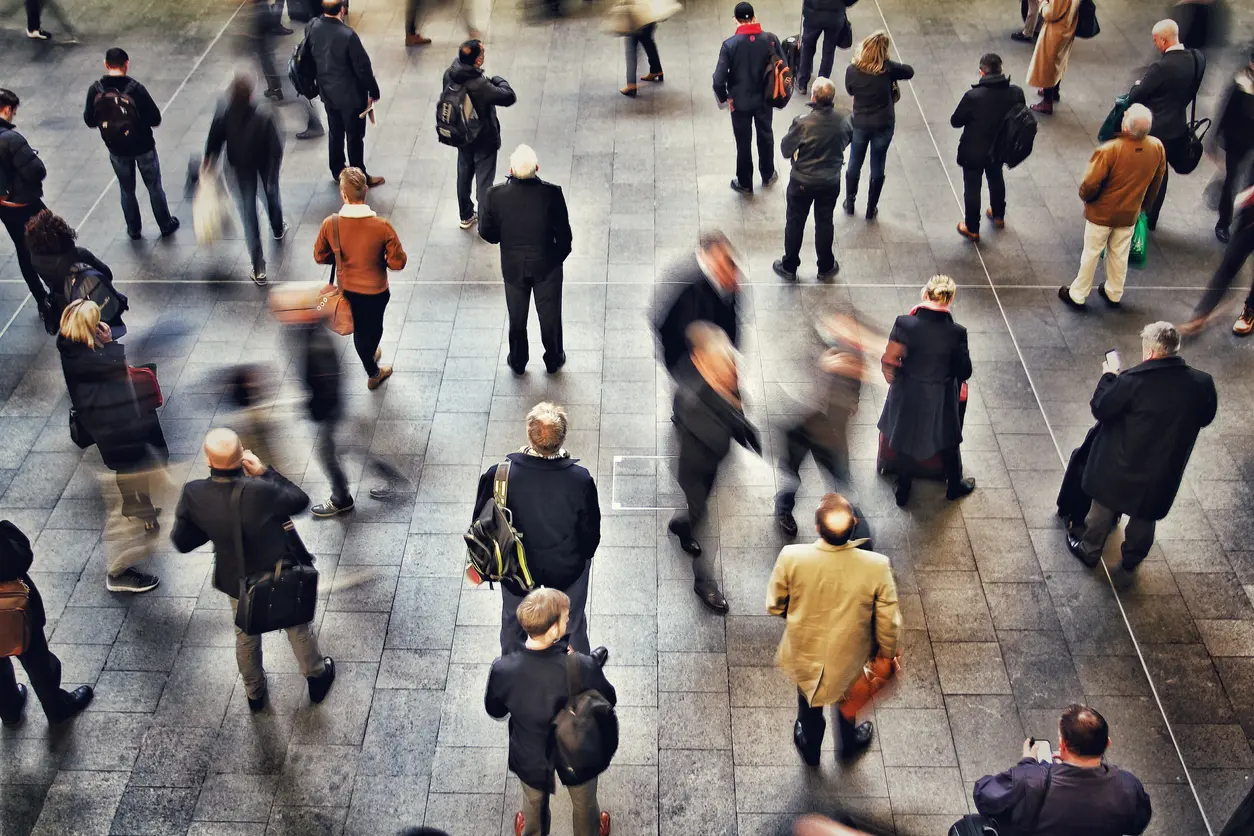


Reach out to us!
Start your AI journey today and let us help you understand your business better. Send us an email or book a meeting with one click!


Reach out to us!
Start your AI journey today and let us help you understand your business better. Send us an email or book a meeting with one click!
2nd September 2024


Belle Williams
Retailers are increasingly turning to sophisticated technologies to gain a competitive edge, and footfall tracking has emerged as a powerful tool in this quest for insight. But what exactly is footfall tracking, and why should retailers prioritise it?
What is Footfall Tracking?
Why is Footfall Tracking important?
Traditional Methods vs Footfall Camera Tracking
The benefits of Footfall Camera Tracking
The Future of Footfall Camera Tracking
Conclusion
Footfall tracking refers to the process of counting and analysing the number of people entering a retail space, as well as monitoring their movements and behaviour within the store.
This can be done using various technologies, including AI-powered cameras, sensors, and other data-gathering tools. By accurately tracking foot traffic, retailers can gain valuable insights into customer behaviour, such as peak shopping times, popular store areas, and overall customer engagement with products and displays.
The importance of footfall tracking lies in its ability to provide retailers with actionable data that can be used to optimise store performance.
For instance, understanding customer flow patterns helps retailers make informed decisions about store layout, product placement, and staffing. This leads to a more efficient and enjoyable shopping experience, as customers are more likely to find what they need quickly and navigate the store comfortably. Additionally, footfall data can be linked with sales figures to analyse conversion rates, helping retailers understand the effectiveness of their in-store marketing and promotional strategies.
Traditional methods of tracking footfall in retail environments, such as manual counting, sensor-based systems, or simple door counters, have long been used to gauge customer traffic. However, these methods often fall short in providing the detailed, real-time insights needed to truly understand customer behaviour and optimise store performance. Manual counting is prone to human error, while basic sensors can only provide limited data, such as the number of entries and exits, without any context on customer movement within the store. Footfall camera tracking, like the advanced solutions offered by Merlin Cloud, uses AI-powered cameras to deliver precise, comprehensive data on customer flow, dwell times, and interaction with products. These cameras not only count the number of visitors but also analyse their paths through the store, identify high-traffic areas, and provide insights into how customers engage with different sections and displays. This rich data allows retailers to make informed decisions about store layout, product placement, and staffing, ultimately leading to a more efficient operation and a better shopping experience for customers. By transitioning from traditional methods to footfall camera tracking, retailers can unlock a deeper understanding of their customers and drive more effective, data-driven strategies.
Manual Counting Provides only basic counts of people entering or exiting, lacking depth in behavioural analysis.
Footfall Camera Tracking can offer solutions to common issues that retailers face.
Problem | Situation | Footfall Camera Tracking Solution |
|---|---|---|
Inefficient Store Layouts | Many retailers struggle with suboptimal store layouts that fail to maximise product visibility and customer engagement. | Identifying high-traffic areas through footfall analytics, retailers can strategically place products, promotional displays, and key services where they are most likely to capture attention. Leading to a more intuitive shopping experience. |
Poor Staffing Allocation | Retailers often face challenges in efficiently allocating staff, leading to either overcrowding during peak times or understaffing during quieter periods | Footfall data helps retailers understand peak shopping times and periods of low traffic, enabling them to allocate staff more effectively. |
Ineffective Marketing Campaigns | Without accurate data, retailers may struggle to measure the impact of their promotional displays and marketing campaigns, leading to missed opportunities for engagement | Footfall analytics provide insights into how customers interact with these campaigns, allowing retailers to assess their effectiveness in real-time. |
Inaccurate Inventory Forecasting | Retailers often face difficulties in predicting which products will be in demand, leading to stock-outs or overstocking. | By understanding customer flow and dwell times in specific areas of the store through footfall analytics, retailers can predict demand more accurately. |
Low Customer Satisfaction | A lack of personalisation and convenience in the shopping experience can lead to low customer satisfaction and loyalty. | Data-driven decisions based on footfall analytics allow retailers to tailor the store environment to meet customer needs and preferences. |
High Energy and resource costs | Many retailers struggle with high operational costs due to inefficient use of store resources like lighting, heating, and cooling systems. | Footfall analytics can optimise resource usage by adjusting these systems based on real-time occupancy data. Reducing operational costs and supporting sustainability. |
Security and Loss Prevention Challenges | Retailers face ongoing challenges in preventing theft and ensuring store security | Footfall analytics enhance security by monitoring customer movement and identifying unusual behaviour patterns. |
As Merlin Cloud is already implementing these technologies, the future of footfall tracking is now. Retailers who are not embracing the power of AI-driven data collection are at risk of falling behind in an increasingly competitive market. As consumers rapidly adjust to new, personalised shopping experiences, these advanced tracking technologies are set to become the industry standard. The Merlin Cloud team are continuously working to develop the technology we use ensuring we’re ahead of the game. As AI continues to evolve, the potential for even more sophisticated analytics and predictive modelling will only increase, giving forward-thinking retailers a substantial edge.

Footfall tracking, particularly through AI-powered camera systems, is transforming the retail industry by providing unprecedented insights into customer behaviour. As detailed throughout this blog, the advantages of shifting from traditional methods to advanced footfall camera tracking are clear. These technologies not only offer a more accurate and detailed understanding of customer movement but also empower retailers to optimise every aspect of their operations—from store layout to staffing, marketing effectiveness, and even energy efficiency.
Merlin Cloud is at the forefront of this technological evolution, helping retailers stay competitive in an ever-changing market. By embracing these innovations, retailers can enhance the shopping experience, improve operational efficiency, and ultimately drive growth. As AI and analytics continue to advance, the opportunities for even deeper insights and more effective decision-making will only expand. The future of retail is data-driven, and those who invest in these technologies today will benefit tomorrow.